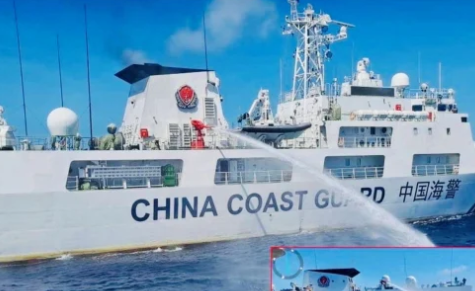Philippines Accuses China of Aggressive Actions in South China Sea
The Philippine government accused China of acting aggressively and illegally in the South China Sea. This accusation came after a series of confrontations between the two countries at sea and in the air. The situation has increased tensions between the Philippines and China, reflecting the ongoing disputes over control of this important region.
What is the South China Sea Dispute?
The South China Sea is an important area in Southeast Asia, surrounded by countries like Brunei, China, Indonesia, Malaysia, the Philippines, Taiwan, and Vietnam. These countries have been arguing for a long time over who controls different parts of the sea. These disagreements have become more serious recently because China has become more powerful and is trying to assert more control over the area.
Historical Background
In 1947, China’s Nationalist government created a map that showed the “nine-dash line,” which is a boundary that claims about 90% of the South China Sea as part of China. Even though the Nationalist government was replaced by the Chinese Communist Party, the new government continued to insist on these claims. However, neighboring countries strongly disagree with China’s claims, leading to ongoing disputes. China claims a large part of the South China Sea, but other countries in the region also claim parts of it. In recent years, China has built military bases and artificial islands, particularly in the Paracel and Spratly Islands, to strengthen its control over the area. This has led to more tension with other countries, who see these actions as an attempt by China to dominate the region.
Global Involvement
The United States has become involved in the South China Sea dispute because it wants to ensure that the region remains stable and that international trade routes are protected. The U.S. has increased its military presence in the area and has supported countries that oppose China’s claims. This involvement is part of a broader effort to prevent China from expanding its influence too much in this strategically important region.
Economic Importance
The South China Sea is not only strategically important but also rich in natural resources. It is estimated to contain around 11 billion barrels of oil and significant amounts of natural gas. The sea also has vast fishing grounds and is one of the world’s busiest trade routes, with over 21% of global trade passing through its waters. This makes control of the area economically significant for the countries involved.
What is the ‘Nine-Dash Line’?
The nine-dash line is a boundary that China uses to mark its territorial claims in the South China Sea. It was first drawn as an eleven-dash line in 1947 but was simplified to nine-dashes in 1953. Despite these historical claims, the nine-dash line conflicts with international maritime law, which governs how countries can claim and use parts of the ocean.
International Tribunal Ruling
In 2016, an international tribunal ruled against China’s claims to parts of the South China Sea, particularly around the Scarborough Shoal. The tribunal said that China’s claims were illegal under international law. However, China refused to accept this ruling, arguing that the tribunal did not have the authority to make such a decision. Finding a solution to the South China Sea dispute is difficult. China continues to ignore the international tribunal’s ruling, and efforts by the Association of Southeast Asian Nations (ASEAN) to mediate have not been successful due to disagreements among its members. This ongoing conflict raises concerns that the situation could escalate into a larger and more dangerous confrontation.
Month: Current Affairs - August, 2024
Category: International / World Current Affairs


